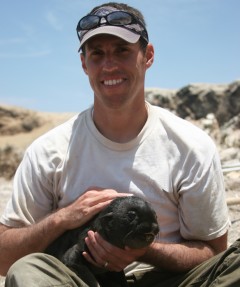
Fire, Spencer

Spencer Fire
Associate Professor | College of Engineering and Science - Ocean Engineering and Marine Sciences
Contact Information
Personal Overview
My research program combines an interest in the very smallest and the very largest organisms in the sea (and occasionally a few in between). From single-celled marine algae (phytoplankton) to shellfish, finfish, sea turtles, humans and marine mammals such as baleen whales, the interactions between these organism can tell us much about the status of our oceans' health. My current research focuses on the impacts of harmful algal blooms and their toxins on marine food webs and the health of sentinel organisms such as marine mammals. To carry out this work, my students and I focus on 3 core areas:
- Developing and using molecular detection methods to investigate how natural contaminants move through marine food webs,
- Drawing on field experience with small cetaceans and pinnipeds, as well as knowledge of field survey methods, to study marine mammal health and behavior in the wild,
- Combining a knowledge of large-scale oceanographic processes with laboratory and field methods to study changing marine ecosystems and their links to wildlife and human health.
Visit the Fire Lab Website here
Educational Background
Ph.D., Ocean Sciences, University of California Santa Cruz (2007)
M.S., Marine Science, University of California Santa Cruz (2002)
B.S., Zoology, Brigham Young University (2000)
Research
Research & Project Interests
MARINE MEGAFAUNA
Marine megafauna (large, ocean-dwelling animals) are often long-lived, top-level predators that face a number of threats from natural and man-made sources. Because of their ability to concentrate contaminants through bioaccumulation and their increasing exposure to a wide variety of health threats, they are frequently threatened or endangered in the wild. For these reasons, they serve an important role as "sentinel species" that act as barometers of ocean health and demonstrate the link between ocean and human health.
HARMFUL ALGAL BLOOMS (HABs)
One major health threat these animals face is exposure to toxins produced by naturally-occurring blooms of marine algae (phytoplankton). These toxic blooms can have devastating effects on marine mammals, seabirds and sea turtles, resulting in mass mortalities with deaths numbering in the hundreds. My research seeks to understand the effects of these toxins on marine megafauna that live where harmful algal blooms occur, both at the population level and the individual level. These efforts are critical in providing natural resource managers and practitioners of wildlife medicine the knowledge needed to mitigate and respond to threats to these protected marine species.


 Give to Florida Tech
Give to Florida Tech